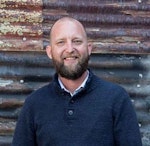A Conversation with AAHID's Sandy Goodman on the Present and Future of Healthcare Design
From the rise of telemedicine to the decentralization of healthcare systems that are moving many clinical services to outpatient settings, the healthcare industry is experiencing tremendous change. These shifts in care models that are transforming the way healthcare spaces are designed¬—in addition to ongoing issues around affordability and flexibility—present a myriad of challenges for design practitioners in the field.
i+s recently caught up with Sandy Goodman, president of CRGA Design and the 2023 president of the American Academy of Healthcare Interior Designers (AAHID), to get her perspectives on the state of the healthcare design industry, her goals for the Academy as its new president, as well as the obstacles and opportunities she sees in the near future.
i+s: Tell us a little bit about yourself and why did you pursued a career in architecture and interior design, and specializing in healthcare design?
Sandy Goodman: As a child I was artistic, and I had an interest in design. When I was in school, I was honored with participation in a gifted and talent program in which I was given the opportunity for a brief internship with an interior designer. This experience helped me realize that I wanted to be an interior designer. My first job out of school provided me the opportunity to work on several senior living projects. Through this experience, I learned how a space can affect people’s health and wellbeing. I believe this was where I first developed my interest in healthcare design.
I am now president of CRGA Design, an architecture and interior design firm that specializes in healthcare design. I am also a big proponent of providing internship opportunities for students of all ages. I consider myself a lifelong learner. I have studied many aspects of healthcare design including evidence-based design, sustainable design and lean thinking. As a Baldrige Executive Fellow, I had the opportunity to learn best practices in business from the Baldrige award winners and an incredible team of mentors and fellow business leaders.
This year I have the honor of serving as president of the Board of the American Academy of Healthcare Interior Designers. I have learned a lot through my collaboration with other Certified Healthcare Interior Designers and I am excited to have the opportunity to lead the organization this year.
i+s: What inspires you to do what you do each day?
SG: My CRGA team, my clients and their patients inspire me every day. They bring meaning to my work as a designer.
My CRGA team inspires me because they are so passionate about the work they do. You can ask any one of them and they can tell you a story behind why they became healthcare designers and what drives their passion. I want them to have the opportunity to be the best they can be and to be fulfilled in the work that they do. It’s my responsibility to support them so they can achieve their goals in their careers and in their lives.
My clients and especially their caregiver teams inspire me. They are so dedicated, and they give so much of themselves every day to care for their patients. I am always amazed by their resilience.
The true inspiration for all of us is the patients. We all want to provide an atmosphere and an experience that will help people heal.
i+s: As the 2023 president of AAHID, what goals or initiatives do you plan to focus on next year?
SG: AAHID is the premier certification program for healthcare interior designers. One of my goals is to work with my Board and fellow Certified Healthcare Interior Designers (CHID) to advocate for greater recognition of AAHID. I believe that it is imperative to have a Certified Healthcare Interior Designer on every healthcare project to protect the health, safety and welfare of our caregivers, patients and families. I want to make sure that our nation’s health systems are aware of that. There are many designers practicing now that meet the criteria but have not taken the examination yet, and I would like to see them achieve the certification.
Another goal is to extend our AAHID community by encouraging diversity, mentorship, collaboration and by providing additional educational opportunities. We work closely with our industry partners and allied professional organizations to support research and education. My goal is to broaden our reach through continued collaboration and increasing our circle of partnerships.
i+s: How would you characterize the healthcare design practice today? What’s changed most significantly in recent years?
SG: Through my work with the Baldrige Foundation, I see healthcare systems really focusing on lean practices and performance improvement. As a Lean Six Sigma Blackbelt, I spend a lot of time working with our clients on lean design. Health systems are constantly challenged to do more with less and efficient design is critical to facilitate efficient operations.
At CRGA Design, we focus on lean operational planning with each of our projects. We challenge our clients to envision the ideal way to operate in their new or newly renovated facilities. It is human nature to just do things the way you always have, but we push our clients to think differently. We feel that as healthcare designers, it is our responsibility to design an environment that supports efficient operations so caregivers can provide care for their patients without unnecessary hurdles. I think many healthcare designers are embracing lean thinking in their practices today.
i+s: What are the most pressing challenges for healthcare designers today and how can these be met?
SG: Healthcare systems are facing unprecedented challenges in workforce shortages. It is imperative that healthcare environments are designed to maximize efficiency. It could be as simple as having supplies and equipment in the correct location to minimize excess movement. To give another example, if a nursing unit is poorly laid out, it may require additional nursing staff to care for patients in rooms that may be remotely located. Each nursing unit has an ideal ratio of nurses to patients. If a unit is not laid out appropriately, it can create inefficiencies.
We also see this on a larger scale where entire departments are not located in a way that efficiencies can be realized. This happens often when healthcare campuses grow over time. Sometimes renovations and additions are built to meet a specific need without keeping an eye on the larger vision. I think healthcare designers have a responsibility to always look at the big picture when they approach a project for a client.
Designers also need to build in flexibility. Healthcare is constantly changing. Every year new technology is developed, new treatments are discovered, and new regulations are put into place. We need to design healthcare spaces so our clients can react to the ever-changing industry.
I think another of the biggest challenges we are facing right now is the cost of healthcare delivery and the cost of construction. These two factors make it difficult for clients to balance needs with affordability. We need to work with our clients and our construction partners to think creatively about how projects can be delivered in a cost-effective manner without compromising future flexibility. It may seem easy to cut corners when budgets are strained, but sometimes this can lead to issues downstream that can prove more costly, especially when future flexibility is compromised.
i+s: Where do you see the industry moving in the next several years? What should healthcare designers be paying attention to?
SG: I believe the healthcare industry has been moving toward more home-based care for a long time now, but it was accelerated with the COVID-19 pandemic. The barriers that we used to worry about, such as patients’ ability to adapt to technology like remote monitoring through wearables or other devices, online scheduling and billing, and remote physician visits, were all crossed during the pandemic. No one wants to sit in a waiting room full of ill people anymore. People adapt and that allows new ways of delivering care to emerge. The shortage of healthcare workers and the ever-rising costs of delivering care in a hospital will make this a necessity. I see opportunities for innovation in home-based care. This includes environments, devices and household items which can support this new care delivery model.


